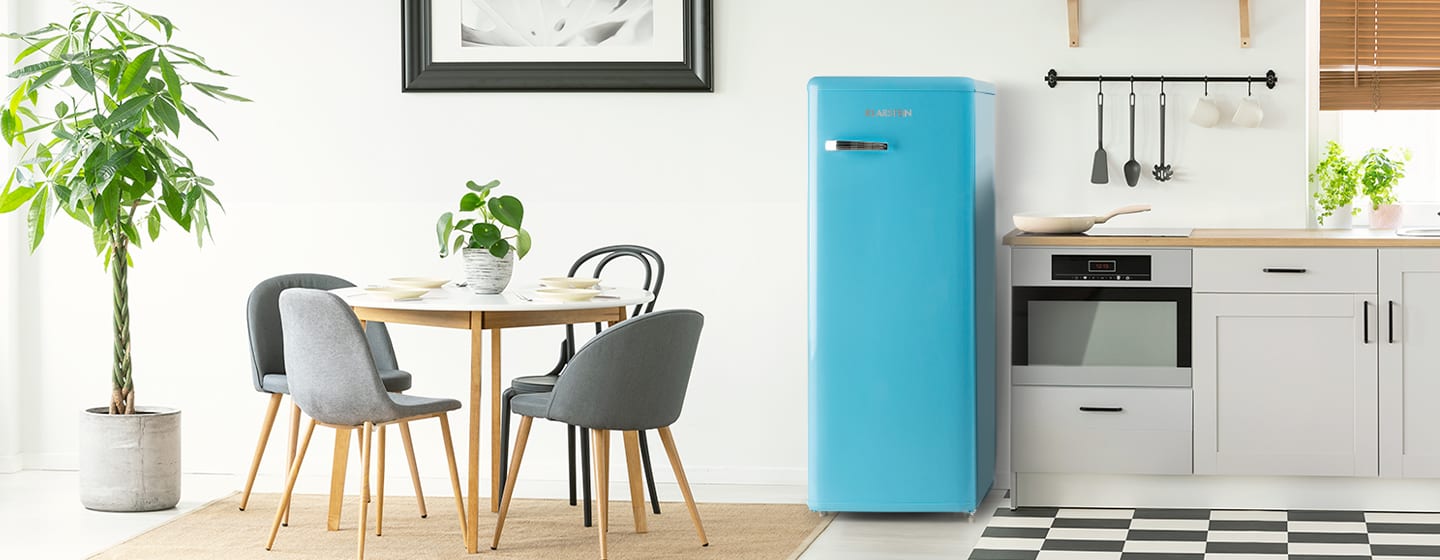Fridge test & guide
Need a new fridge? But what should you pay attention to when buying? What features does your fridge need? In our big test, we'll compare different models for you. From the design aspect to the energy rating, we'll walk you through how to find your best fridge. Whether it's a small fridge for the hobby room, a large model for the kitchen or the drinks fridge that always has cool drinks ready - here you can find out which criteria you should use to make your decision.
Refrigerator: comparison of features and performance
The first thing you should ask yourself is what functions you want your refrigerator to perform. For example, is it intended as a universal appliance in the kitchen? Is it a second unit for the garage or basement, or do you need a drinks fridge? A small refrigerator in the office or other rooms is also possible. Think about how much space you need, which design you prefer and whether you want the fridge to be free-standing or built-in. You should also consider the energy class. Below well show you examples of different categories of refrigerators. This will give you an overview, and then you can search specifically for what suits you.
Hudson free-standing fridge

Product tip
Hudson refrigerator
Compact design with plenty of storage space. With the vegetable drawer, three levels and space for drinks in the door, the Hudson is ideal for small households.
- Compact: Clever design with 88 litres capacity
- Simple design: In elegant silver
- Easy to use: With 7-stage thermostat

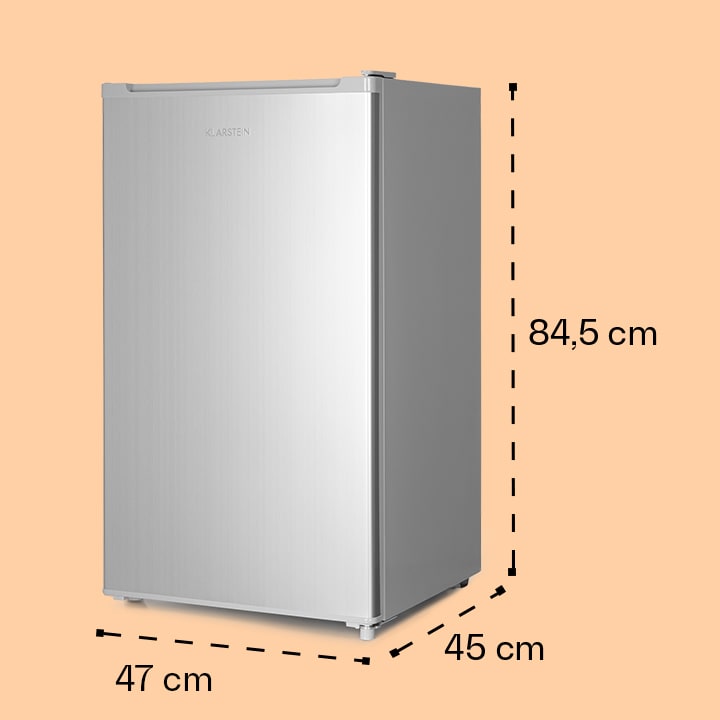
Small device with lots of storage space? This is probably the most common requirement for a refrigerator. The Hudson fits perfectly into this category. As a free-standing refrigerator, it can be connected anywhere. With dimensions of 84.5 x 47 x 45 cm, it doesn't take up much space, but it still has a large volume of 88 litres and a clever layout so that a lot can be accommodated. This refrigerator is ideal for small households.
- Compact and space-saving
- Good division
- With vegetable compartment
Advantages:
- Not suitable for large households
- Not possible as a built-in device
Disadvantages
Irene XL Retro Fridge

Product tip
Irene XL Retro Fridge
This retro refrigerator impresses above all with its design. With its vintage look and fresh light blue colour, the Irene looks particularly good and will be a real visual highlight in your kitchen!
- Large: 242 litres capacity
- Visual highlight: Eye-catching design
- Plenty of space: 5 levels and 6 door shelves for best use
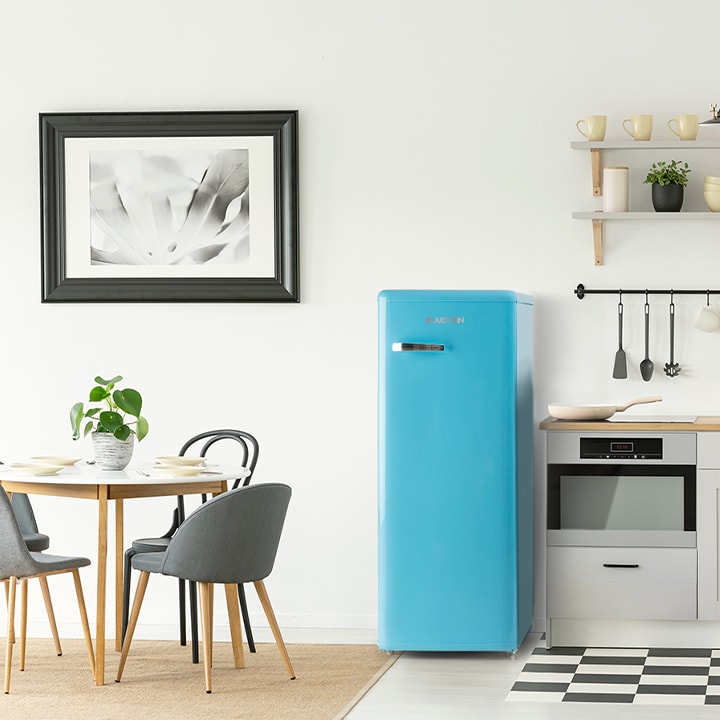

Plenty of space for the whole family or a flat share: The fridge without a freezer compartment not only looks good, it also offers a lot of space. On 5 levels plus a vegetable compartment and with 6 compartments in the door, there really is space for everything that needs to be cooled. In addition, this standing refrigerator is a real statement piece. Instead of just being part of the furnishings, it will become the highlight in your kitchen. As a full-size refrigerator, no space is wasted on a freezer compartment.
- Extremely generous space with 242 litres
- Cool retro design
- Suitable for large families or shared flats
Advantages:
- Does not fit in every kitchen
- Not a built-in device
- No freezer
Disadvantages
Yummy fridge small

Product tip
Yummy fridge small
Small but mighty: The Yummy fridge is a mini fridge with a capacity of 47 litres. Highlight: The neo-retro design with a stylised handle and a 3-litre freezer compartment.
- Elegant design: Fits in every room
- Really cool: Freezer compartment included
- Compact: Drinks and snacks ready to hand anywhere
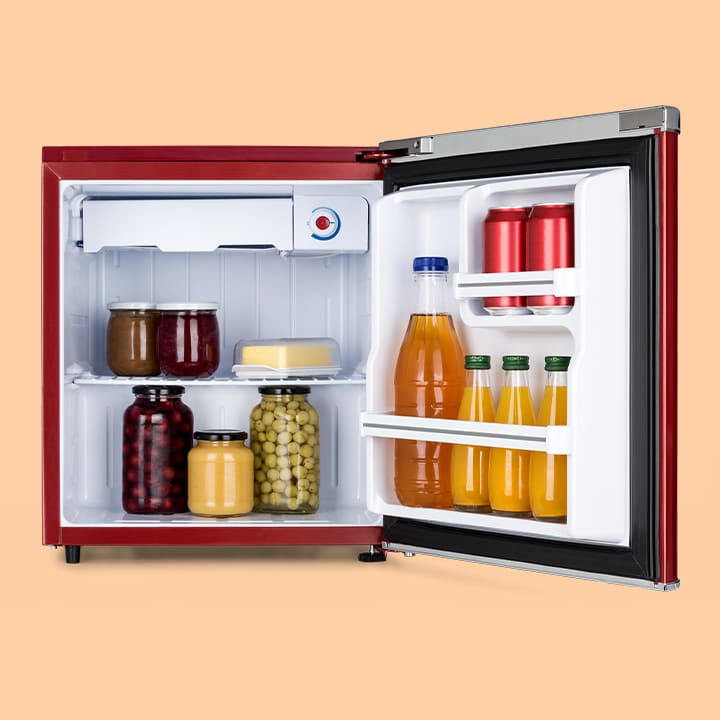
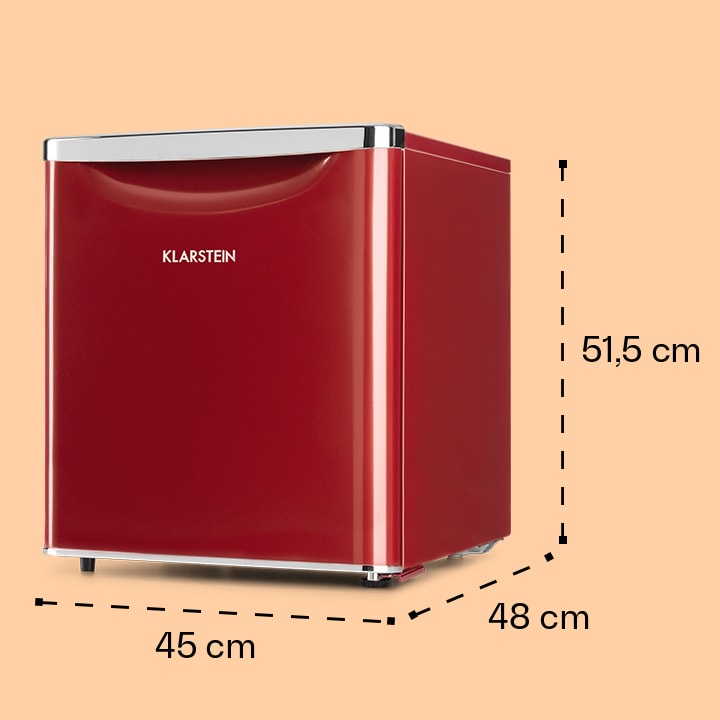
Neo-retro design, chrome trim and a really cool interior: The Yummy small refrigerator looks good in any place. The refrigerator temperature can be easily set between 0 and 10 °C. The freezer compartment can be cooled down to -3 °C.
- Space-saving: Fits in every room
- Design: Striking and special
- Multitalented: With built-in freezer compartment
Advantages
- Design does not fit into every room
- Only suitable for small snacks and drinks
Disadvantages
Beersafe 5XL Drinks Fridge

Product tip
Beersafe 5XL Drinks Fridge
Elegant design for a cool drink anywhere. With the Beersafe 5XL drinks fridge, you can have plenty of space for cans, bottles, and more. With the elegant panoramic glass door, it always looks good and shows what is inside.
- Elegant: With panoramic glass door and digital display
- Plenty of space: For up to 231 cans
- Free-standing: With interior lighting, a highlight in every location
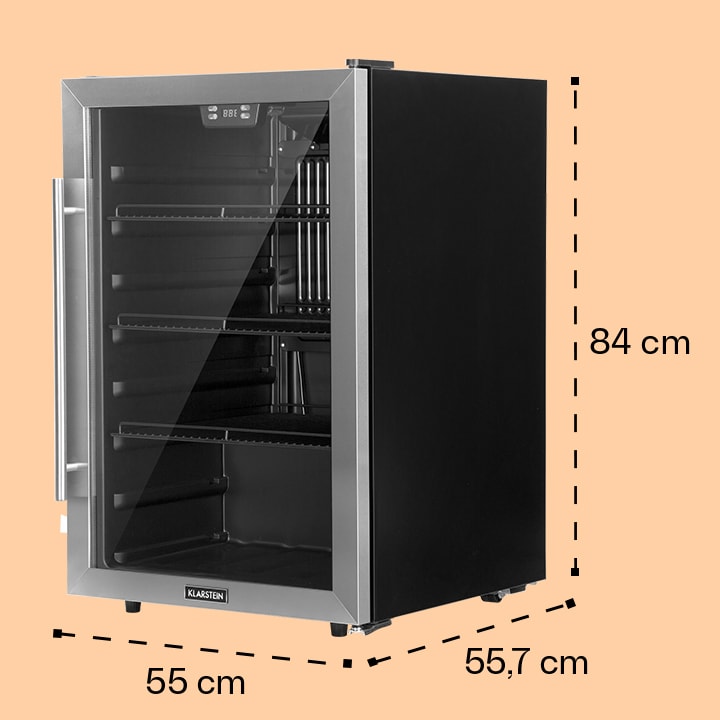
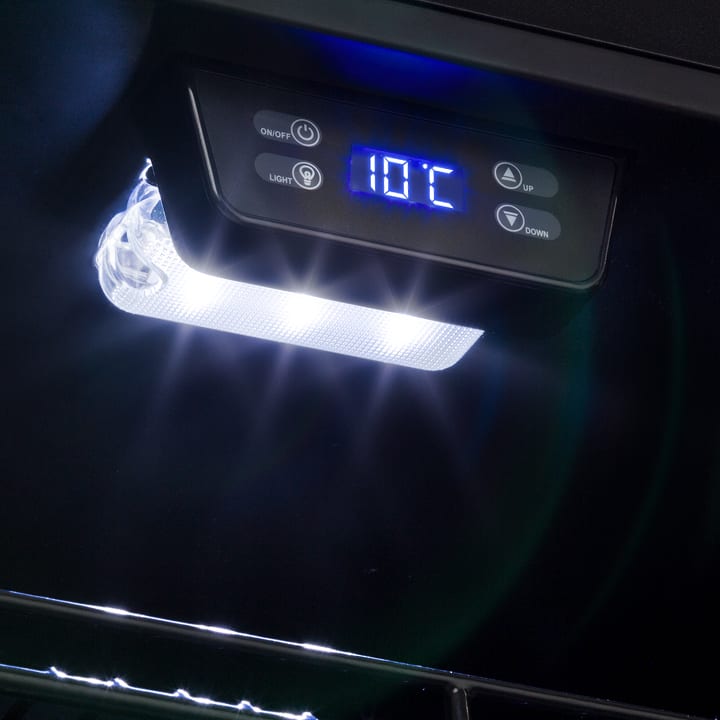
Want to test a beverage refrigerator? Whether in a shared room, in the party room or even in your own bar area: With this free-standing refrigerator, you have 148 litres of space for refreshing drinks. The Beersafe impresses with its elegant design with stainless steel frame, panoramic glass door and stainless steel handle. The chic black interior with lighting elegantly rounds off the look.
- Convenient for drinks in any place
- Fits in anywhere with ease
- Temperature setting from 1 to 20 °C
- Good overview thanks to the glass door
Advantages
- Only suitable for drinks
- Not a built-in device
Disadvantages
Cool Cousin fridge-freezer combination
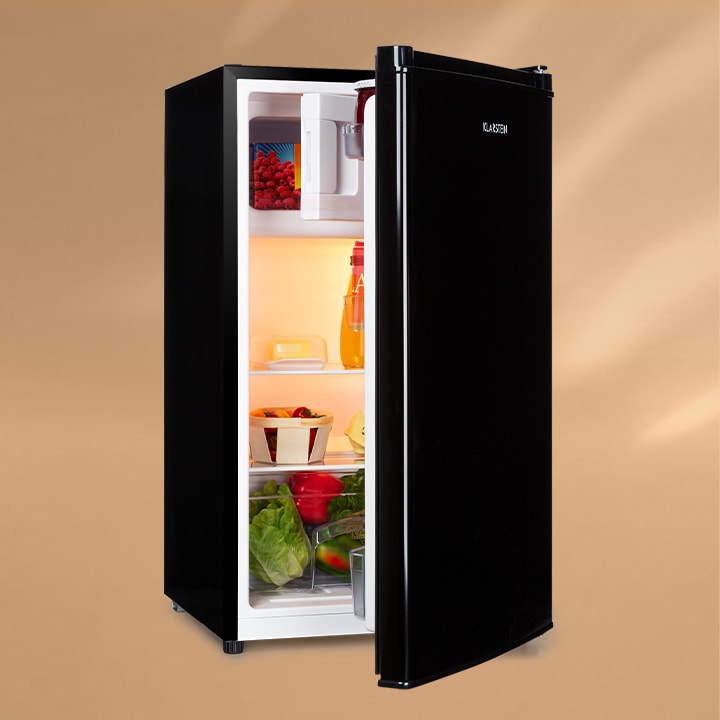
Product tip
Cool Cousin
A refrigerator with a built-in freezer compartment and an elegant look: The Cool Cousin keeps everything fresh and cool. It is perfect for single and small households.
- 69 litres capacity
- Elegant look in black
- 3-litre freezer
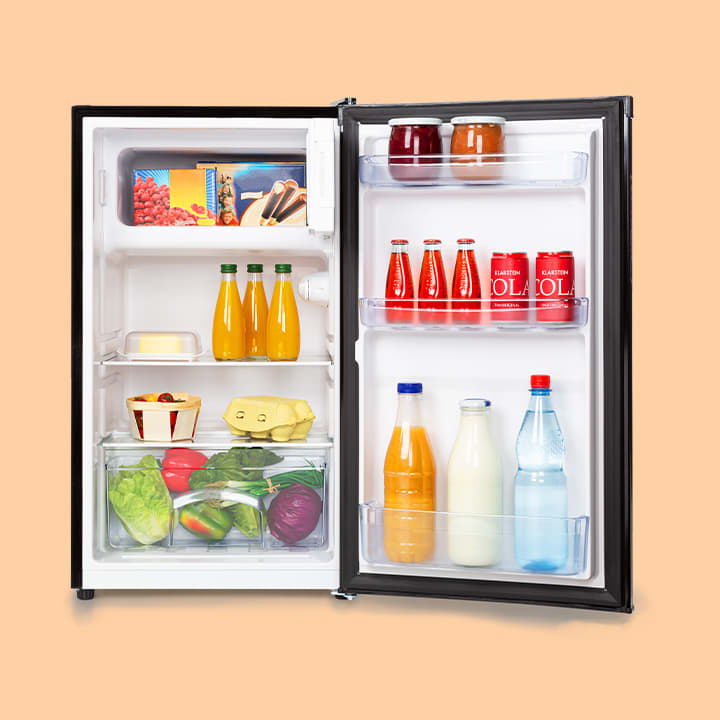
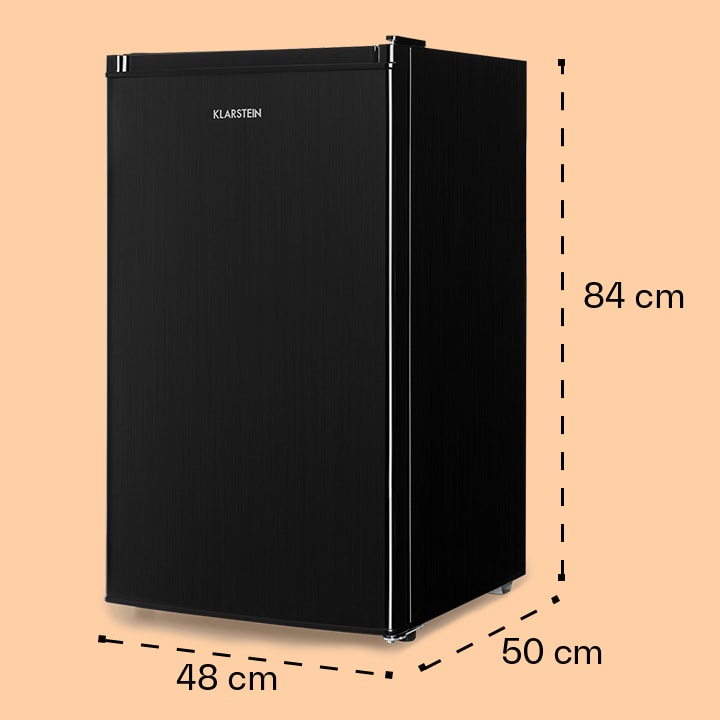
Sometimes it just has to be all in one. The fridge-freezer combination is always handy when you want to have everything in one place. The Cool Cousin offers plenty of space, including door compartments and a vegetable compartment for cooling. But there is also a freezer compartment in which ice and much more can be stored. This combination is usually indispensable for small households.
- Combines cooling and freezing
- Good division inside
- ECO Excellence System
Advantages
- Less space to cool
- Not suitable for installation
Disadvantages
Comparison table
| Hudson Refrigerator | Irene XL Retro Fridge | Yummy Fridge | Beersafe 5XL Fridge | Cool Cousin Fridge-Freezer | |
|---|---|---|---|---|---|
| Capacity | 88 litres | 240 litres | 45 litres | 148 litres | 81 litres (70-litre fridge, 11-litre freezer) |
| Weight | approx. 21 kg | approx. 35 kg | approx. 14,5 kg | approx. 34 kg | approx. 22 kg |
| Dimensions | approx. 47 x 84,5 x 45 cm | approx. 55 x 143,5 x 60 cm | 45 x 51,5 x 48 cm | approx. 55 x 84 x 60,5 cm | approx. 47,5 x 83 x 48,5 cm |
| Energy Efficiency Class | E | F | F | F | E |
| Noise Level | 39 dB max. | 41 dB max. | 42 dB max. | 43 dB max. | 40 dB max. |
| Freezer | No | No | Yes | No | Yes |
| Control | 7-stage thermostat | Temperature controller | Thermostat | Control panel with digital display | Mechanical control knob |
| Features | - LED interior lighting - 3 shelves - Door stop: right, not changeable |
- Interior lighting - Bottle compartments and egg tray in the door - Door stop: right, not changeable |
- Capacity freezer: 3 litres - Number of shelves: 1 - Door stop: right, not changeable |
- Switchable white LED interior light - 3 shelves: Flexible use - 3 shelves: Flexible use |
- Interior lighting - Number of shelves: 2 - Door stop: right, not changeable |
Buying the perfect fridge
Want to buy a fridge, but you are having a hard time making a decision? With this comparison table, we show you which factors you should pay attention to when comparing. Once you know what type of fridge you want, you can focus on the design, energy class, consumption and other factors. Of course, the space factor is important here: A large refrigerator that is always half empty consumes electricity unnecessarily. A refrigerator that is too small and always stuffed full is not the solution either. How many people will use it? What do you mainly want to cool? With the answers to these questions, buying a refrigerator will then be a piece of cake!
FAQs
A refrigerator temperature between 5 and 7 °C is ideal. It is important to ensure that a refrigerator is not equally cold or warm everywhere. But with this average value, you basically can't go wrong when making fresh food, dairy products and similar last as long as possible. The temperature is usually 5 to 7 °C if you set your fridge to level 2 (7 levels).
That depends on the freshness of the eggs and the temperature in your fridge. At a normal temperature of 5°C, fresh, raw eggs will keep for 4-6 weeks. Even after the expiry date, the eggs can still be good. If you are unsure, it helps to do a test: Put the egg in question in a container with water. If it stays on the bottom, it's still fresh. If it stands up or even floats on the surface, you should no longer consume it.
Most refrigerators are compression refrigerators. They work with a pump and refrigerant. The refrigerant is routed through coiled tubes inside the refrigerator. By evaporating, this agent extracts heat from its surroundings and thus cools everything inside the refrigerator. The heat is then emitted again outside the refrigerator (usually behind it), and the refrigerant becomes liquid because it is put under great pressure. Then this process starts all over again.
On the first level above the crisper. Since heat always moves upwards, it also gets warmer and warmer in the refrigerator the higher up it goes. Since the vegetable drawer itself is closed, the temperature is regulated differently there. On average, the coldest place in the fridge (i.e. on the first shelf) is approx. 2 °C warm / cold.
That depends on the energy efficiency. With a very economical refrigerator, the consumption is about 100 kWh. With older refrigerators (around before 2005), the consumption can be up to 430 kWh.
Every four weeks. This prevents bacteria and mould spores from multiplying uncontrollably. Clean the fridge with an all-purpose cleaner or with vinegar or lemon in hot water. Tip: A small bowl of baking soda neutralises odours in the fridge.
Level 5. The higher the level on your fridge, the colder the interior. For the desired 5 to 7 °C, level 1 to 2 is usually sufficient.
That depends on the type of transport. This question is about the fact that oil can get into the circuitry of the refrigerator during transport. Thus, you have to give it enough time to flow back. If the refrigerator has been stored or transported horizontally, you should wait 12 to 24 hours before plugging it in. In the case of standing storage, it can theoretically be connected immediately. If you're not sure whether the ride was bumpy or the fridge was tipped, wait at least 2 hours.
